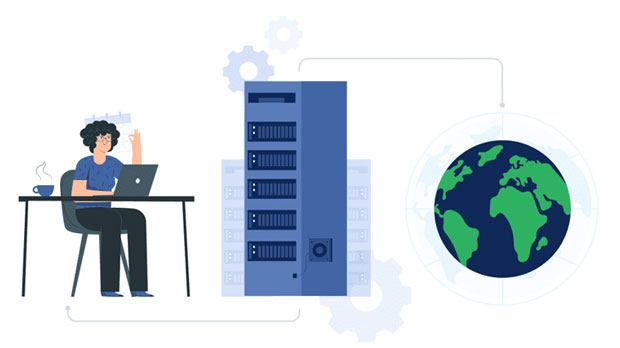In the world of proxy servers, maintaining high performance and reliability while switching between proxies is critical for achieving optimal results in dynamic proxy configurations. Among the various solutions available, PYPROXY and NetNut Proxy are two prominent options that many businesses utilize for handling proxy switching in dynamic modes. This article explores the efficiency of switching between PyProxy and NetNut Proxy in dynamic proxy settings, examining the benefits, drawbacks, and the real-world impact each solution has on the overall performance of network operations. With insights into how these proxies function and the speed at which they switch, users can make informed decisions based on their specific needs. Understanding Dynamic Proxy ModeDynamic proxy mode refers to a setup where proxy servers are used in a way that allows for seamless switching between multiple proxies. This method is often employed to bypass geolocation restrictions, increase anonymity, and avoid IP blocking during web scraping or automation tasks. The dynamic nature of this configuration requires the proxy to rapidly and efficiently switch between various IP addresses without causing significant delays in the connection or interruptions in service.For dynamic proxy mode to be effective, the switching mechanism must be both fast and stable. This is where solutions like PyProxy and NetNut Proxy come into play. Let’s delve into how these two systems perform in this context.Overview of PyProxy and NetNut ProxyBoth PyProxy and NetNut Proxy offer dynamic proxy capabilities, but they operate on different principles and technologies that can influence their efficiency. PyProxy is a Python-based tool that provides dynamic proxy switching by utilizing a wide range of available proxies, including residential, data center, and mobile proxies. This flexibility allows for robust proxy management, making it ideal for tasks that require diverse proxy types. On the other hand, NetNut Proxy is a premium proxy service that specializes in offering static residential IPs. Its infrastructure relies on a proprietary peer-to-peer network, which means that users can access proxies from real residential IPs with a high degree of anonymity and reliability.Factors Affecting Proxy Switching EfficiencySeveral factors influence the efficiency of proxy switching in dynamic proxy systems. These include the speed at which the proxy can switch, the success rate of proxy connections, and the ability of the system to handle large volumes of requests. Let’s explore these aspects in relation to PyProxy and NetNut Proxy.1. Switching SpeedThe speed at which proxies can be switched is perhaps the most critical factor in any dynamic proxy system. In tasks such as web scraping or automated browsing, users rely on rapid proxy switching to avoid detection and blocking. The faster the switch, the better the performance.PyProxy, being a Python-based tool, provides flexibility and speed but may require significant manual configuration to optimize its performance. Users who have experience with Python can fine-tune the switching mechanism to suit specific needs, but this may not be ideal for beginners or those seeking an out-of-the-box solution.NetNut Proxy, by contrast, excels in switching speed due to its infrastructure. The peer-to-peer network ensures that proxies are always readily available, with minimal latency. As a result, users typically experience faster switching times, which is a major advantage for tasks requiring high-speed proxy operations.2. Proxy Connection Success RateThe success rate of proxy connections is another crucial aspect of proxy switching efficiency. A high success rate means that proxies are more likely to be functional and can handle a larger volume of requests, reducing the chances of failure during proxy switching.PyProxy has a vast pool of proxies to choose from, but the availability and reliability of these proxies can vary significantly depending on the source. Users might face a higher failure rate if the proxies they choose are not well-maintained or are from unreliable sources. This can lead to interruptions in service and slowdowns in the proxy switching process.NetNut Proxy, with its emphasis on residential IPs, generally offers a more consistent and reliable connection. Since the proxies are part of a managed network, users experience fewer issues with proxy failures. This high success rate is particularly beneficial for tasks that require a continuous flow of requests without interruptions.3. Scalability and Load HandlingAs businesses grow, their proxy needs also increase. Scalability is an essential factor for choosing a dynamic proxy solution. A system that can handle a larger volume of requests without compromising speed or success rate is vital for maintaining performance in high-demand scenarios.PyProxy, due to its flexible setup, can scale according to user needs. However, this scalability may require manual intervention or additional resources, especially when handling large-scale operations. The configuration process might become more complex as the number of proxies increases.NetNut Proxy, with its robust infrastructure, is designed to handle high volumes of requests effortlessly. Its peer-to-peer network allows for efficient scaling without requiring additional configuration or resources from the user’s side. This makes it an attractive choice for businesses looking for a solution that can scale without complexity.4. Cost ConsiderationsWhile both PyProxy and NetNut Proxy offer dynamic proxy capabilities, their pricing models differ significantly, which can affect their suitability depending on the budget and specific needs of the user.PyProxy is an open-source tool, meaning that it’s free to use, but users will need to invest time and possibly additional resources into configuring and maintaining the system. This makes it a great option for users with a limited budget but some technical expertise.NetNut Proxy, being a premium service, comes at a cost. However, the price includes high-quality, reliable proxies and excellent customer support. For businesses with a higher budget, NetNut Proxy can be a more efficient and hassle-free solution that eliminates the need for manual configuration and maintenance.Real-World Impact: Choosing the Right SolutionThe decision between PyProxy and NetNut Proxy ultimately depends on the specific needs and resources of the user. For businesses that need a flexible, customizable solution and have the technical expertise to manage it, PyProxy can be a great choice. Its open-source nature allows users to tailor the system to their exact specifications, making it a suitable option for smaller-scale operations or those with a tight budget.However, for businesses that prioritize speed, reliability, and scalability without the need for extensive technical knowledge, NetNut Proxy is likely the better option. Its superior switching speed, high connection success rate, and ease of use make it ideal for high-demand operations.In conclusion, both PyProxy and NetNut Proxy offer efficient proxy switching in dynamic proxy modes, but the choice between the two depends on the user’s specific needs. While PyProxy provides flexibility and cost-effectiveness, NetNut Proxy excels in speed, reliability, and scalability. Understanding the factors that affect proxy switching efficiency—such as speed, connection success rate, scalability, and cost—can help users make the most informed decision for their proxy needs.
Sep 11, 2025



































































